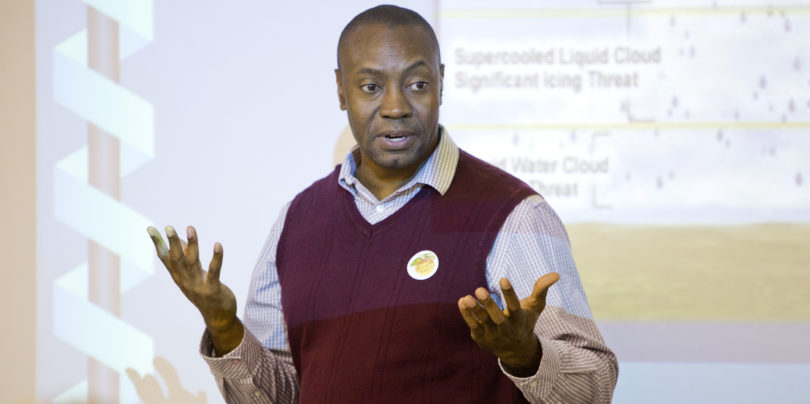While Harvey no longer carries the fury of a Category 4 hurricane, many experts say that the worst is yet to come.
The University of Georgia’s J. Marshall Shepherd — former president of the American Meteorological Society — followed the storm closely in the days leading up to landfall, and he issued strong warnings to people along the Gulf Coast through his Twitter account and regular articles in Forbes.
Shepherd, a Georgia Athletic Association Distinguished Professor and director of UGA’s atmospheric sciences program, worried that people were overlooking one of the storm’s most serious threats: days of relentless rainfall.
The remnants of Harvey have already caused catastrophic flooding in parts of southeastern Texas, where some area could receive as much as 50 inches of rainfall, according to the National Oceanic and Atmospheric Administration’s National Hurricane Center. Preparations are also underway to evacuate parts of Louisiana as storm bands move farther inland.
“We cannot cover this storm just as a ‘landfalling hurricane,'” Shepherd said in Forbes on Saturday. “It needs to be covered as a ‘lingering, unprecedented flood event.'”
But Shepherd admits that the storm is not completely without precedent. In an interview with the New York Times, he drew parallels to Tropical Storm Allison, which caused widespread flooding in Houston in 2001.
“In some ways, I think this event is going to far surpass what we saw in Tropical Storm Allison,” he said. “The steering currents that would normally lift it out of that region aren’t there.”
Shepherd, who also serves as host of the Weather Channel’s Sunday talk show “Weather Geeks,” told the New York Post that this storm could go down as “the worst flooding in U.S. history.”
Federal Emergency Management Agency Administrator Brock Long said that more than 450,000 people were expected to seek disaster assistance due to flooding. An estimated 30,000 people are already living in temporary shelters.
As of Tuesday, the storm has already claimed the lives of nine people and spawned dozens of tornado warnings.







